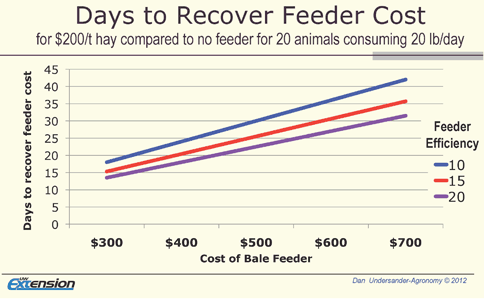 "Lack of water at optimal times cannot be made up later with additional rains or irrigation," said Dan Undersander, when discussing the state of alfalfa stands, during the November 12 Hoard's Dairyman webinar. "Once alfalfa goes without water, it is like a newborn calf that does not get adequate nutrition early in life. It will always be behind in its growth," said the UW extension alfalfa specialist.
"Lack of water at optimal times cannot be made up later with additional rains or irrigation," said Dan Undersander, when discussing the state of alfalfa stands, during the November 12 Hoard's Dairyman webinar. "Once alfalfa goes without water, it is like a newborn calf that does not get adequate nutrition early in life. It will always be behind in its growth," said the UW extension alfalfa specialist.To help alfalfa cope with the drought, consider fertilizing the crop with potassium to improve winter survival. Also add sulfur to fields if needed. He stressed it was not too late to add this valuable element to your fields – just do it before it freezes.
Those were just some of the topics discussed in the webinar "Sorting through our cropping strategies" presented by Dan Undersander, University of Wisconsin-Madison, earlier this week. This free Hoard's Dairyman webinar was the 24th webinar presented and the first one to address the "growing aspects" of dairy cattle feed.
The respected forage specialist discussed variances in first and subsequent alfalfa cuttings and how they impact dairy cattle rations. He noted that traditionally, 40 percent of an alfalfa field's annual yield is from the first cutting, and it is the most digestible because of the cooler weather.
When cutting alfalfa, he encouraged growers to cut every other crop at 10 percent bloom to help rebuild the alfalfa stand. And with the weather of 2012, he said cutting alfalfa at less than 10 inches tall was a waste of labor and gasoline, as well as causing damage to the field. In 2012, there were more pests and in greater varieties due to the dryness. But if drought occurs, alfalfa is the forage crop of choice because of its deep root system.
Citing an earlier webinar that talked about planting additional forages to compensate for the lack of forage this year, he challenged viewers to think about these additional crops. This includes years when forage supplies were not of the upmost concern. "Remember that herbicides used on small grains can remain in the soil for 18 months, so be very aware of the ramifications," said Undersander.
He had several take-home messages. He asked viewers to think about their current forage supplies. "How short are you?" he asked. "If you need to cull from the lower end of your herd, cull early to save feed now. "
He also urged dairy producers to reduce shrink – both in storage and at feedout. "Can feed bunks make a difference in feed efficiency?" he asked. Yes! He showed that 40 percent of large round bales are wasted if just left in a field for cattle to consume. "Use cradle feeders," he suggested, "where hay is more difficult to drag from the manger. Waste can shrink to only 5 to 10 percent with good feeders. Undersander charted the cost of the feeder versus lost hay, and in just under six weeks, even the most expensive feeder paid for itself.

Looking ahead to the spring of 2013, what can be done?
Alfalfa stands should be evaluated. If they are poor, consider replanting. After first cutting, Undersander suggests fertilizing the field. If you have available pasture land, consider using it to stretch your forage supplies.
This "Sorting through our cropping strategies" will be archived and available on the Hoard's Dairyman website. Link to archived webinar. The November webinar was sponsored by Merial and their Best in Class Dairies program.








